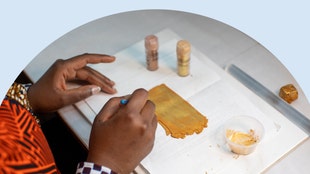This article is intended as a practical guide for sellers to address common product safety questions. Sellers are ultimately responsible for the safety and compliance of their products.
Friendly disclaimer: If you list products for sale on Etsy, you must comply with all federal, state, and local legal requirements and Etsy policies applicable to those products and product listings. This information provides an overview regarding non-exhaustive US requirements for educational purposes only, is subject to change over time, and is not legal advice. It is not intended to create, and receipt of it does not constitute, a lawyer-client relationship. The authors, Etsy, Inc. and Etsy Ireland UC disclaim all responsibility for any and all losses, damages, or causes of action that may arise or be connected with the use of or reliance on these materials. Requirements may vary depending on your location and where you make your products available. Etsy reserves the right to remove listings of products that do not comply or that may be unsafe for any other reason.
What is children’s jewelry?
Jewelry that is designed and intended primarily for children age 12 and younger is considered children’s jewelry. These products are considered children’s products, and should incorporate general safety considerations for use by children. In the US, the Consumer Product Safety Commission (CPSC) requires that sellers certify the compliance of each of their products in a Children’s Product Certificate (CPC). The CPSC provides an example CPC for children’s apparel that you can use as a model.
General safety considerations when selling children’s jewelry
When selling jewelry for children, it is important to make sure that the jewelry will not harm the wearer and that it can withstand use and abuse. Children’s necklaces without a safety clasp or breakaway feature may pose a strangulation hazard. Small parts and beads can be choking hazards. Any small parts and beads should be well-affixed and not come off. Where possible, manufacturing redundancies should be used to ensure that any small parts and beads are affixed in more than one way so that they will not separate. Jewelry with loose small parts, such as jewelry with detachable beads or charms, should not be sold as suitable for children under the age of 3. Jewelry should not have sharp points or edges, except for functional sharp points such as earring studs.
Additional resources:
- Product Safety Essentials: Small Parts in Children’s Toys
- Standard Consumer Safety Specification for Children’s Jewelry, ASTM F2923-19
Magnets in jewelry
Strong or high-powered magnets can cause severe injury and even death if more than one magnet is swallowed, because the magnets can attach across the intestines causing severe tissue damage. Jewelry made with loose or separable small, high-powered magnets, such as magnetic simulated facial or body piercings, may not be sold on Etsy.
Magnets in jewelry for children under age twelve
Children’s jewelry with magnets can be sold on Etsy only if it contains magnets as part of a safety clasp that are not strong or high-powered magnets. These magnets must not come loose under use and abuse scenarios. Conducting testing or obtaining test documentation from your supplier, showing that the magnets are less than 50 flux in strength, is highly recommended. If possible, magnets used as part of safety clasps should be purchased from reputable suppliers and should be manufactured with redundancies so that the magnets cannot come loose.
We reserve the right to remove listings for jewelry items containing small, loose or separable high-powered magnets and magnetic jewelry for children under the age of 12, aside from items with magnetic safety clasps that are not high-powered magnets.
Jewelry with embedded batteries
Button and coin cell batteries are very dangerous if swallowed by children and can cause severe injury or even death. If your children’s jewelry contains a button or coin cell battery, the battery should not be accessible without the use of a coin, screwdriver, or other tool. If the jewelry contains non-replaceable batteries, the jewelry or the packaging and/or instructions should state that the battery cannot be replaced. An optional pictogram warning has been developed and is in use internationally.
We reserve the right to remove listings that contain accessible coin and button cell batteries.
Jewelry composition and hypoallergenic claims
Nickel
A significant amount of the population is allergic to nickel. Nickel in jewelry can cause severe rashes and skin reactions (dermatitis) for sensitive populations. Nickel is known as a strong sensitizer. There are also limitations on the presence of nickel in jewelry under European Union law and in some US states. It is your responsibility to understand and follow all relevant requirements. There have been recalls for the presence of excessive nickel in jewelry in the US, the European Union, and elsewhere. If you know that your jewelry items may expose consumers to nickel, we recommend that you make that clear in your listing, so that consumers with known nickel allergies can avoid purchasing these items.
We reserve the right to remove listings of children’s jewelry that may contain excess amounts of nickel.
Hypoallergenic jewelry
If you are claiming that your metal-containing jewelry is hypoallergenic, you must either have:
- Test records showing that the jewelry has a limited potential to release nickel; or
- Reliable documentation that the metal in the jewelry is stainless or surgical steel, gold, sterling silver (at least 925/1000), platinum, palladium, rhodium, osmium, iridium, ruthenium, or titanium.
We reserve the right to remove listings for children’s jewelry that claims to be hypoallergenic if the seller cannot support this claim.
Additional resources
- Product Safety Essentials: Requirements for Lead and Lead in Paint
- To help Etsy sellers learn more about safe design practices we’ve partnered with the organization Kids In Danger (KID) to bring you education and resources created for small business owners like you. The KID Design Safety Toolkit is a free video course designed specifically for small business owners, with lessons that go in-depth on designing and creating safe products for children. You can test your knowledge along the way through interactive quizzes. The whole course takes about three hours to complete, but you can stop along the way to take it at your own pace. It’s currently available in English. Check it out here.
 Words by Etsy Staff
Words by Etsy Staff




